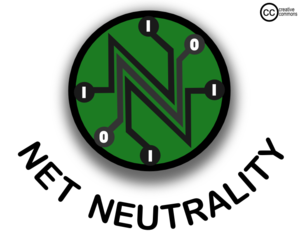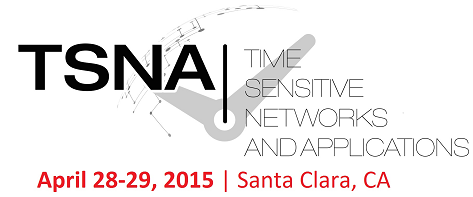 We’ve all heard the term Unified Communications throughout the AV industry these days. It’s one of the many buzzwords crossing the lips of sales people, marketing folks, and manufacturers. Frankly speaking, it’s absolutely a brilliant move forward when it comes to how our customers can put the technology and solutions we provide to use. It’s green technology that helps cut down on the need for travel as a few simple keystrokes can connect people all over the planet and it’s a money saving venture that requires just an upfront cost with very little maintenance. With these advantages we are moving education, business, and interaction as a whole forward. Yet, there’s still one thing that makes me hesitate to believe that this will be the sole way we communicate professionally for some time to come: not everyone actually understands how to communicate clearly in the digital age.
We’ve all heard the term Unified Communications throughout the AV industry these days. It’s one of the many buzzwords crossing the lips of sales people, marketing folks, and manufacturers. Frankly speaking, it’s absolutely a brilliant move forward when it comes to how our customers can put the technology and solutions we provide to use. It’s green technology that helps cut down on the need for travel as a few simple keystrokes can connect people all over the planet and it’s a money saving venture that requires just an upfront cost with very little maintenance. With these advantages we are moving education, business, and interaction as a whole forward. Yet, there’s still one thing that makes me hesitate to believe that this will be the sole way we communicate professionally for some time to come: not everyone actually understands how to communicate clearly in the digital age.
How many times have you received an e-mail, a text message, or even a voicemail where the contents threw you into frustration because your question wasn’t answered the way you were hoping, someone was making presumptions about your role in a project, or the request being made came off with the wrong tonality? We are individuals and interpretive beings. We see and hear things in very different ways based on our own life experiences. These seem to be amplified when it comes to modern digital communications because there is, debatably, less interpersonal interaction than there as ever been because we are going through the layer of technology to get to the other person.
The argument can be made that with video conferencing and unified communications and collaboration this barrier is decreasing because we can see each other and have a similar discussion as though we were in the same room. But I would point out that video conferencing, while better than text communication, still does not prevent distraction nor does it promote attention. People can be in the conference yet still surf the web, chat with others via messaging services, even mute their microphone and take another call or office visitor. The distractions can add up making the conversation less effective than the in person chat that started it all.
As a whole, I am very much a fan of unified communications technology in theory, but the part that seems to be getting missed by those that are offering it, and some of those that use it, is the aspect of actual communication. These technologies are an entirely different way for professionals to interact, for teachers to reach their students, and for friends to keep up with one another around the world. That means we all have to relearn how to reach and understand people better when utilizing this technology.
An AV industry example of what I mean would be something along the lines of an exchange between a project manager and an engineer. The two people involved in the conversation have the common goal of finishing a project but are going to be interpreting the information shared and the resulting circumstances differently. More commonly a project manager wants to get the best information together that allows them to solidify that man power is scheduled appropriately and establish that equipment is reaching the personnel to be certain the project will reach completion on time and, ideally, under budget. The engineer is going to want to examine the accuracy of the information to ensure that the correct equipment is being used in the best way possible to achieve the customer’s desired functional outcome. Now, imagine those two people trying to conference information without being in the same place and with potential distractions. Picture the kinds of short hand terminology that might get used in and e-mail or text because one party believes it is the most efficient way possible to share pieces of information. Not exactly the most effective form of conversation, is it?
The technology is the tool, but if we don’t work out how to best put it into practice then it won’t matter how clear the visual or sonic imaging in the conference room might be because the necessary information might not be getting shared. This means that we have to examine the human element involved in unified communications. If a meeting with twelve people in the “Brady Bunch” style camera view window is being used, how large are those people going to be? Will anyone notice you’re working on something else when the topic doesn’t pertain to you? What about a classroom setting where there might only be one camera showing the instructor with nothing showing the students? The only way to know if a participant was actually focusing on the class material is to check the analytics of the session and determine the percentage of time the conference was the primary window being viewed. And none of that accounts for the personal interpretations of information. We have all worked with someone that had a mild paranoia about them, was a credit seeker, or was a little over eager to always help others while ignoring their own responsibilities. All of that could result is some potential misinterpretation of what is being discussed in a given business meeting. That would happen regardless of the physical location of all parties, but it must be accounted for in this new communications climate.
 I still see unified communications solutions being the wave of the future, but it’s going to be the up and coming generation that really understands how to put this technology to use effectively. I blame this not on the fact that they grew up with technology, thereby having it their entire lives so they know how to use it better than the generations that came before them. I, instead, blame this on the fact that the generation on its way up has become known for the inability to stop themselves from over-sharing information. The baby-boomer generation, generation-X, and even some in generation-Y are people that were raised with a sense of decorum to not share every part of themselves with the world. There was a delineation between public and private appearance that was to be kept at all times and the professionalism that came with that meant a certain amount of secrets being held in order to retain power in a given relationship, or perhaps just maintain one’s dignity. But the other parts of generation-Y and the new generation of Millenials have not had the same upbringing, and with social media at their fingertips have not learned or accepted the modern standard of brevity. It is with that concept in mind that this up and coming generation is pushing harder to be clearly understood that I believe they will raise the communication standard in this new form of interaction. The fact that they can’t help themselves from going into the minute details to make certain that there is a complete understanding of materials may actually turn out to be a benefit to them in the long run. Simultaneously, it can’t be argued that those nipping at our heels will potentially face a greater struggle with the fact that they are much more easily distracted. But with the societal push to do ‘something you love’ as a career the Millenial crowd might have a leg up on those that came before them because they will care about what they are doing, regardless of the ever shortening human attention span.
I still see unified communications solutions being the wave of the future, but it’s going to be the up and coming generation that really understands how to put this technology to use effectively. I blame this not on the fact that they grew up with technology, thereby having it their entire lives so they know how to use it better than the generations that came before them. I, instead, blame this on the fact that the generation on its way up has become known for the inability to stop themselves from over-sharing information. The baby-boomer generation, generation-X, and even some in generation-Y are people that were raised with a sense of decorum to not share every part of themselves with the world. There was a delineation between public and private appearance that was to be kept at all times and the professionalism that came with that meant a certain amount of secrets being held in order to retain power in a given relationship, or perhaps just maintain one’s dignity. But the other parts of generation-Y and the new generation of Millenials have not had the same upbringing, and with social media at their fingertips have not learned or accepted the modern standard of brevity. It is with that concept in mind that this up and coming generation is pushing harder to be clearly understood that I believe they will raise the communication standard in this new form of interaction. The fact that they can’t help themselves from going into the minute details to make certain that there is a complete understanding of materials may actually turn out to be a benefit to them in the long run. Simultaneously, it can’t be argued that those nipping at our heels will potentially face a greater struggle with the fact that they are much more easily distracted. But with the societal push to do ‘something you love’ as a career the Millenial crowd might have a leg up on those that came before them because they will care about what they are doing, regardless of the ever shortening human attention span.
In the end, though, the simple fact remains that as AV professionals we can continue to provide these technological tools that make it easier for people to communicate, but unless we also work with our customers on how the communication itself needs to change the desired result might never be accomplished. People will still wake up in the morning and go to their home offices, but those “no pants, work from home” days are going to require them to put on their communication pants first.




